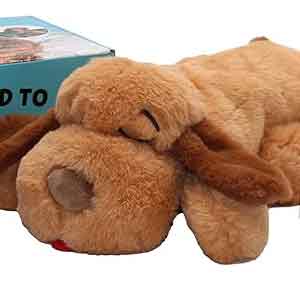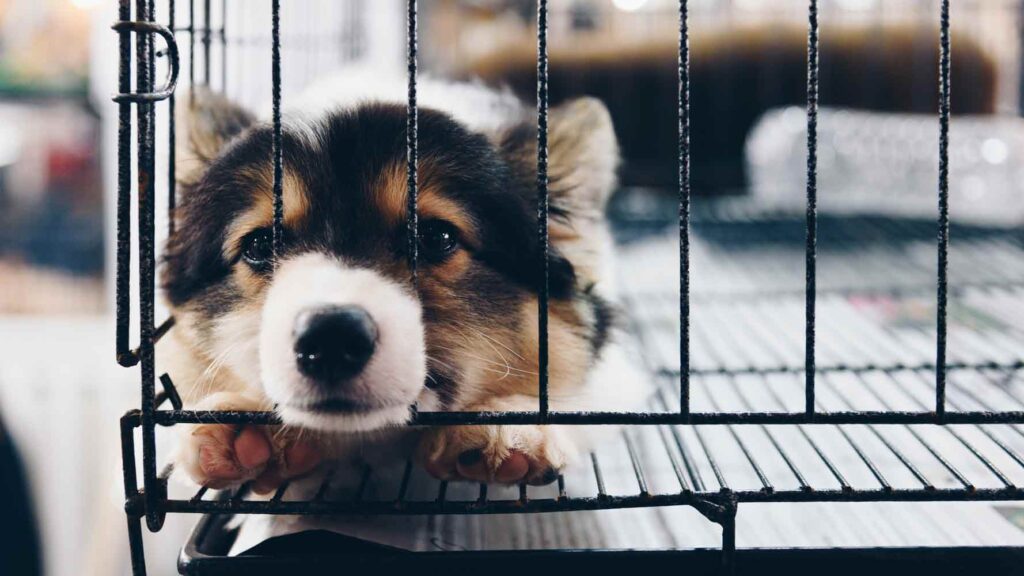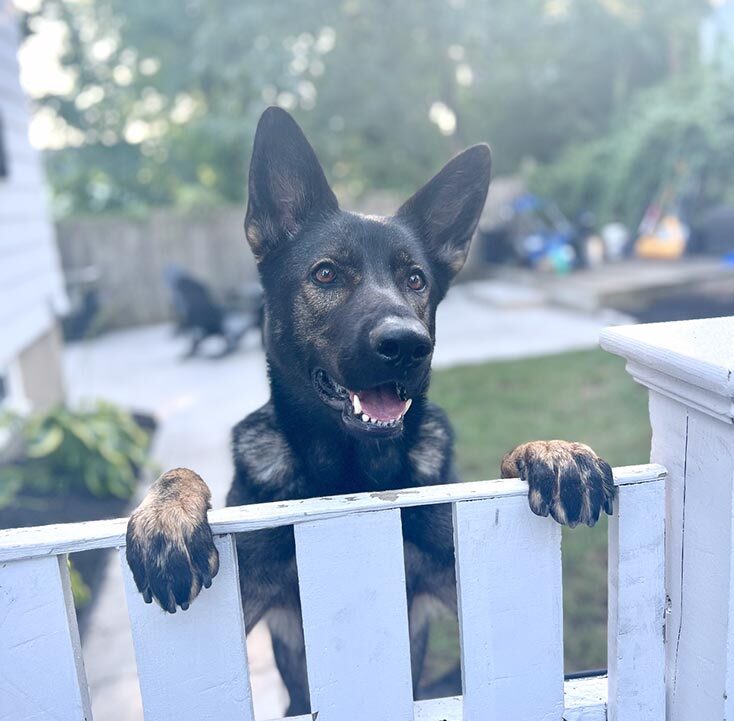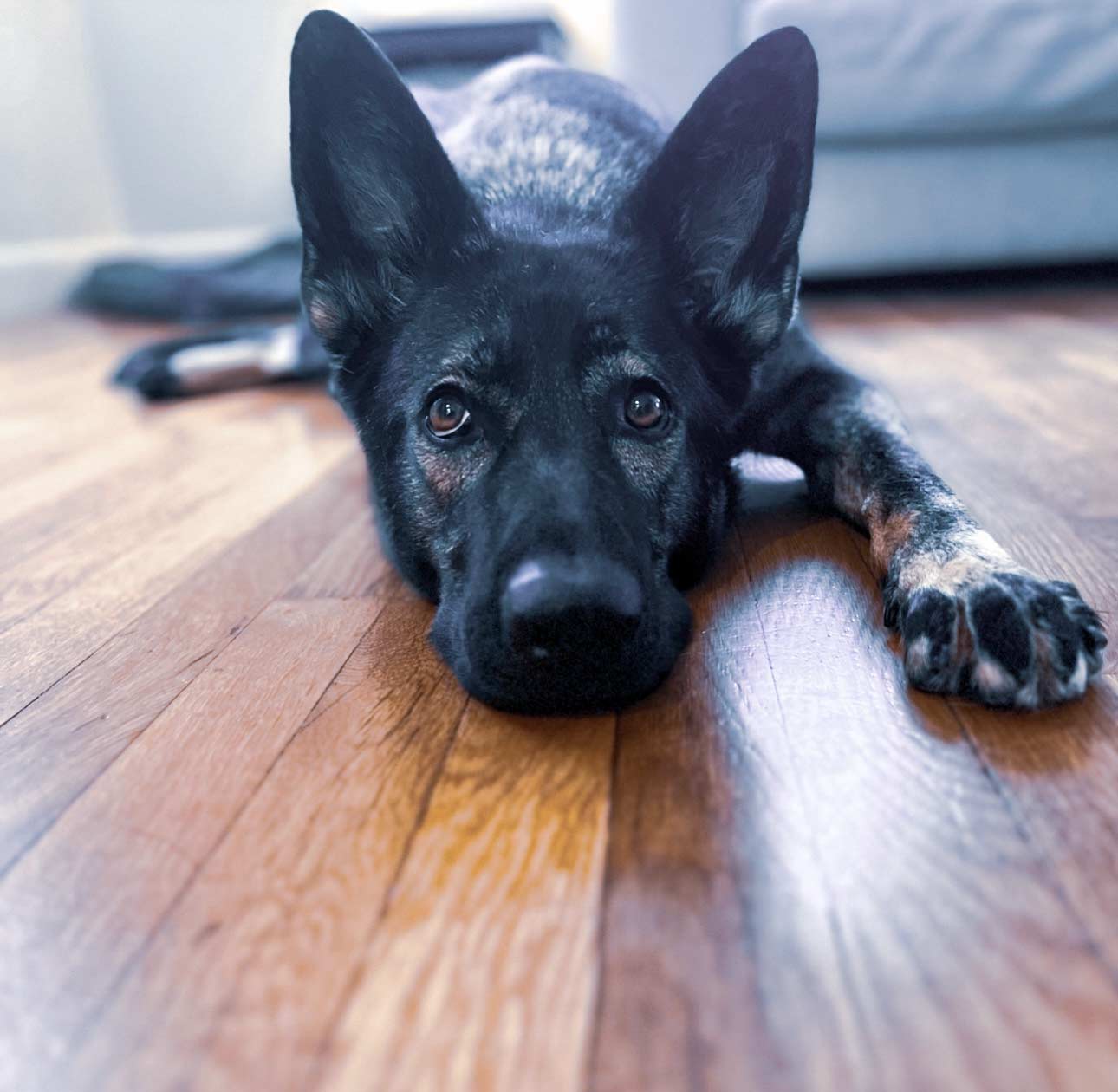Hey there, fellow puppy parents! If you’ve landed on this page, chances are your puppy won’t stop crying in the crate at night. Maybe they have been screaming in their crate for hours, and you’ve hit your breaking point. Between constant whining, crying, and your lack of sleep, maybe you are even questioning whether getting the puppy was a good idea. Trust me, you are not alone!
If you’ve already started crate training and are worried that you messed everything up, stop the negative self-talk, and don’t worry. Dogs are intelligent animals; you can retrain them to adjust to sleeping in their crate. It just requires a lot of patience and consistency on your part.
We made it through the sleepless nights and constant crying, and we are here to help you! In this short article, we address why your puppy is most likely crying in the crate at night and what you can do to stop it.
Do I Let My Puppy Cry It Out?
The short answer is yes – after ensuring their basic needs have been met.
When your puppy starts crying in the crate at night, your first reaction will be to let them out and help them. This is a normal reaction, and it means you are a good pet parent. If your puppy is in distress, you should always check on them.
Crying in the crate at night is normal. Puppies who have never been crate-trained before will often show signs of distress by whining, crying, barking, or howling when you leave them alone in the crate. I know the crying can be super frustrating, but it’s really important that your puppy learns to self-soothe in order to grow into a well-adjusted adult dog.
Make Sure They Don't Have To Go To The Bathroom

New puppies usually cry when they need to urinate or defecate. They don’t have complete bladder control yet and can only hold it for a short amount of time. If you think your puppy needs to go potty, take them out of the crate and outside immediately.
It’s really, really important to bring them directly back to the crate as soon as the potty break is over. If you don’t, your brilliant puppy will learn to associate crying with getting out of the crate.
Loneliness
Most new puppies are adopted when they are just 8 weeks old. In addition to moving to an entirely new environment, they go from sleeping with their mother and littermates to sleeping alone, which can be frightening. Dogs are pack animals by nature. Many puppies cry in their crate because they miss their littermates’ company and warmth.
Solution: Now that you are their pack member, they probably just want to be closer to you. Move the crate at night to a location in or near your bedroom. Make sure your puppy can see and smell you nearby. They will feel more secure knowing you are close.
If your puppy really struggles to settle down at night, purchase a comfort object, like the heated Snuggle Puppy Toy, which mimics their mother’s heartbeat. This can help soothe them until they are old enough to settle down independently.

Snuggle Puppy Heartbeat Toy With Heat Pack
- Recreates Maternal Intimacy
- "Real-Feel" Pulsing Heartbeat
- Batteries & Heat pack Included
- Machine Washable
Fear And Anxiety
After moving to a new home without their littermates, a new crate can seem like a scary place. Your puppy might be crying in the crate at night because they are frustrated they can’t leave. If your puppy has never been rate trained before, they may feel confined or restricted.
Solution: Make the crate comfortable and appealing. A soft, washable bed and a cozy blanket are a great place to start. Test out using a crate cover to give the crate a more den-like feel. Check the temperature and make sure there are no noises that might make them scared.
Introduce the crate with short, positive sessions with lots of treats and praise. Start feeding your puppy in the crate to create a positive association. You want them to think the crate is the coolest spot in the house. Never use the crate as a time-out spot. You want it to be their cozy den, never a punishment.
Check out our article How To Get Your Puppy To Love Their Crate for detailed tips on setting up the crate for success.
Human Comfort
Maybe you’ve already fed them, given potty breaks, and ensured the crate is comfortable, but they are still crying. Sometimes, your pup just wants a cuddle or some reassurance from you. They might still cry because they want to interact with the rest of the family. As a pet parent, it’s your job to let them know everything is okay, even though they are in the crate for now.
Solution: Leaving a blanket or piece of clothing that smells like you can help reassure your crying puppy. When you place your puppy in the crate and walk away, try ignoring their initial cries. If they start to settle down in a few minutes, you don’t need to return to comfort them.
If the puppy cries for more than a few minutes, you can make a brief appearance to comfort them but not coddle them. Come back into the room and sit quietly near the crate. Speak to them in a soothing tone. When your puppy shows any sign of calming down, praise them immediately.
You can even offer treats to teach them that quieting down is a behavior they will get rewarded for. This will also encourage a sense of safety and security.
Establishing A Routine Decreases Crying And Whining

Dogs thrive on routine and will quickly learn the rules and ways of the house if you take the time to establish one. It doesn’t have to be anything crazy; a simple routine of meals, playtime, and potty breaks works wonders.
Feeding: Having regular meal times helps build trust and leads to regular potty breaks.
Playtime: A tired puppy is a happy puppy. Make sure they get enough playtime and walks during the day so that they’ll be ready to sleep at night. You can also incorporate mental stimulation to tire them out. Our article on How To Mentally Stimulate Your Dog offers free brain games that you can do at home with your puppy.
Potty Breaks: Young puppies have to go to the bathroom frequently. Set a couple of alarms throughout the night. I know you’re tired, but get up and take them outside even if they don’t seem to have to go. This will decrease accidents and nighttime crying. Gradually, your puppy will be able to hold it longer.
When To Consult Your Veterinarian
If you’ve tried everything and those nighttime concerts are still going on, it might be time to consult a pro. Persistent crying could indicate distress or health issues, so a chat with your vet or a dog trainer can provide tailored advice.
Conclusion
We don’t sugarcoat it here at the Woof Wire. I won’t lie and say that crate training a puppy is a piece of cake. Every puppy is different. Proper crate training takes consistency and a ton of patience. But stick with it, and soon, those nighttime cries will be replaced with peaceful snoozing. And who knows, maybe you’ll even miss those midnight serenades (just kidding, you’ll definitely enjoy the sleep more).
Got any tips or stories of your own? Shoot us a message to share. Your experience could be the lifesaver another dog parent needs. Happy training, and here’s to peaceful nights ahead!
People also Ask
It varies, but with consistent, positive training, most puppies will start to feel at home in their crate within a few weeks.
If your puppy is having trouble settling down, putting a cover on the crate can give it a cozier and more den-like feel, which can help calm their anxiety.
Start out having the puppy sleep in the dog crate next to the bed. Make it cozy with blankets and give the puppy a stuffed toy for comfort.
Crate training your puppy as soon as you bring them home will establish good routines and help them feel more relaxed and settled.




